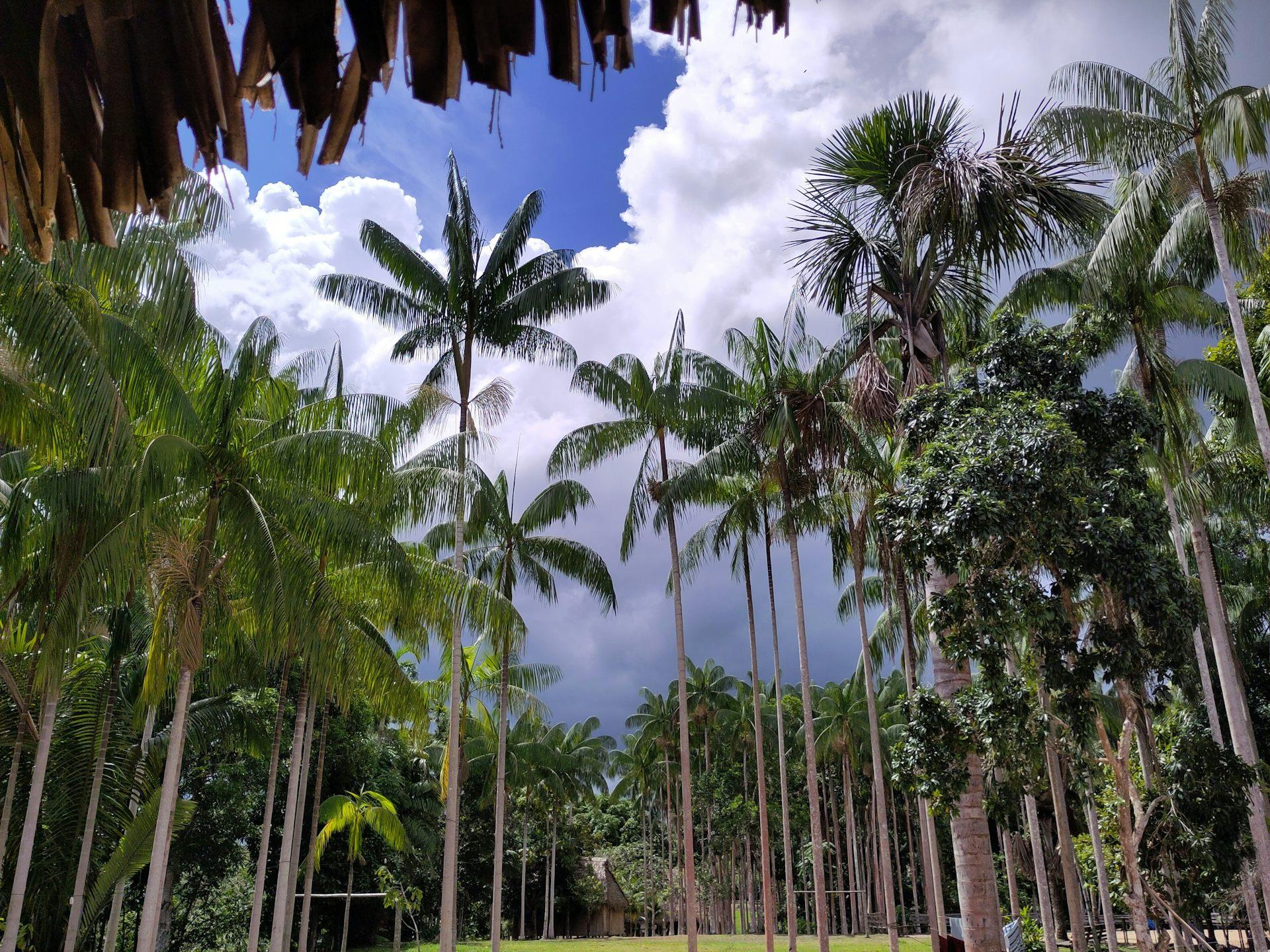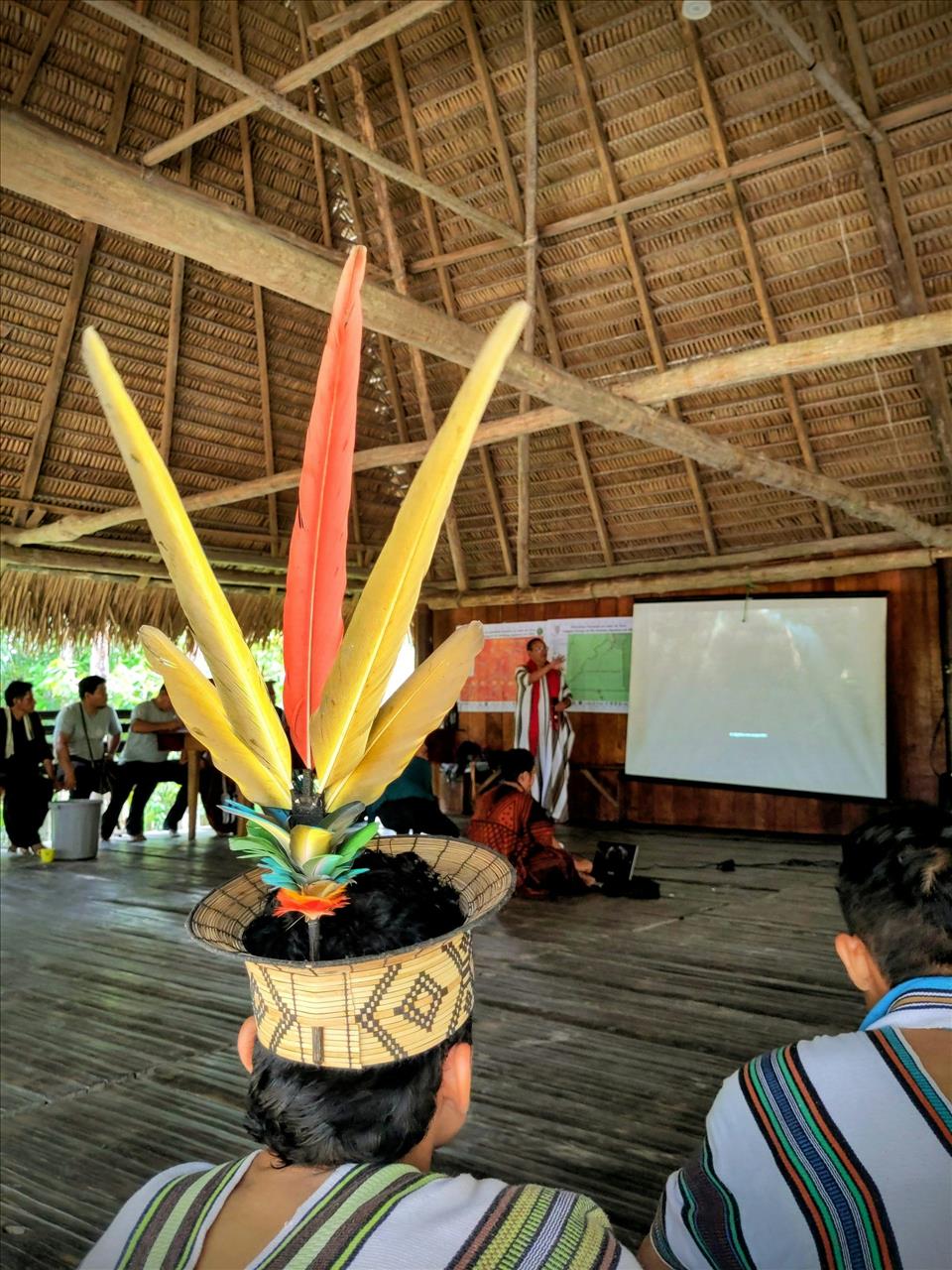
Indigenous Voices At COP30: The Amazon Speaks Will The World Listen?
It is a welcome and long-overdue step to bring Indigenous peoples and local communities closer to climate negotiations. Traditionally organized societies and their institutions, across the Amazon and worldwide, play a crucial role in climate adaptation, biodiversity conservation, and environmental protection. Western delegates in Belém would do well to listen to them.
Championing polycentric, collective governanceIndigenous territories in the Amazon consistently exhibit lower deforestation rates and higher carbon storage than surrounding lands, functioning as effective climate mitigation systems. To safeguard their livelihoods and forests, Indigenous communities have developed sophisticated territorial governance systems grounded in decentralized networks that link local authorities with regional federations, civil society groups, researchers, and subnational governments. Operating across multiple scales, these partnerships enhance resilience and continuity in land stewardship.
Such polycentric structures, with multiple overlapping centers of authority, enable local actors to self-organize and make autonomous decisions. Various Indigenous communities collaborate with external partners to protect pressured landscapes.
The Ashaninka of the Kampa do Rio Amônia Indigenous LandElinor Ostrom was the first woman and political scientist to win the Nobel Prize in Economic Sciences. When designing her principles on how to sustainably manage common-pool resources such as forests or water bodies, Ostrom could have well illustrated her famous book with the Ashaninka case.
Around the end of the 19th century, a small group of Ashaninka left the Peruvian Selva Central and settled along the Amônia River in the Upper Juruá region of Brazil. Upon their arrival, they were subjected to a system of peonage and quasi-slavery, working for local patrons. After decades of resistance, their territory was officially demarcated by the Brazilian government in 1992.
At that time, approximately 30% of the roughly 87,000 hectares of land had been deforested, primarily for cattle ranching and logging by non-Indigenous settlers. Since then, the Ashaninka have undertaken extensive reforestation efforts, and today only about 0.5% of their territory remains without forest cover, limited mostly to housing areas and small plots. Their remarkable environmental restoration work has been internationally recognized, earning them the Equator Prize in 2017 and the Newton Prize in 2018.
Once bound by systems of debt and dependency, and for centuries resisting the advance of outsiders, the Ashaninka of Brazil now stand among the world's environmental leaders. This November, they will arrive at COP 30 in Belém not as victims of history, but as its survivors and visionaries. They bring with them the voices of the forest, the memory of struggle, and a call for change.
The Ashaninka demonstrate how an institution and governance system focused on self-sufficiency, consensus-building, collective interests, and co-management structures may be effective in governing common goods. How partnering with civil society organizations, research institutions, international organizations, and local government agencies (e.g., to coordinate surveillance, participatory mapping, community fire management, and the commercialization of non-timber forest products) may help in slowing agribusiness, illegal logging, mining, and organized crime.
Adapting to local realitiesInstead of merely blaming the perpetrators of climate change, the Ashaninka are undertaking climate change adaptation measures. They are improving access to water, fostering effective fire management, creating early warning systems, protecting native, drought-resistant seeds, evaluating forest signals to predict climate threats, and establishing training centers to promote agroforestry practices.
Because environmental impacts are experienced locally, site-specific knowledge is essential. Through intergenerational interaction with their territories, Indigenous populations monitor seasonal cues, hydrological cycles, soil conditions, and species behavior. They may detect environmental change long before satellite data or climate models register it.
One key initiative to be launched in Belém is the Tropical Forest Finance Facility (TFFF), which aims to raise US$125 billion to conserve carbon-absorbing forests. To avoid repeating the mistakes of previous finance mechanisms, TFFF must place Indigenous communities at the heart of its governance. They are primary knowledge holders of regional socio-ecological conditions, and the past has shown that one-size-fits-all conservation rarely works. Indigenous populations help translate and continually reassess climate action to ensure it aligns with ecological, political, and cultural contexts.
Customary governance adapts broad conservation rules to local realities, for example, by defining which areas can be used seasonally and which must remain untouched. This ensures that protection does not compromise daily life and local livelihoods.
For climate finance to be successful, Indigenous communities must be able to adapt funding schemes to their own sharing and decision-making traditions. This local agency helps prevent redistributive tensions and makes initiatives more sustainable.

Açaí plantation. The fruits are sold through the Ayõpare Cooperative. Photo from Personal archive/ Cristiana Bertazoni
Indigenous authorities tailor external programs to fit social and ecological relations on the ground, transforming distant policies into context-sensitive, lasting arrangements. Ideally, the Western world should support ecosystem finance instruments designed by Indigenous institutions themselves, such as the Podáal.
Francisco Piyãko, one of the leaders of the Ashaninka community Apiwtxa, reminds us:
Wewito Piyãko, Francisco's brother and also an Ashaninka leader, elaborates:
Knowledge co-productionIn the Amazon, joint research on traditional soil-enrichment practices, such as terra preta or complex agroforestry systems known as chagras, may scale up sustainable solutions to sequester carbon, support food production, and enhance climate resilience. Across Amazonia, the presence of terra preta, rich, dark soils created through the addition of organic matter and charcoal, shows that Indigenous peoples have not only preserved ecosystems but actively enhanced their fertility over millennia.
This co-production enhances global mitigation by generating more accurate, locally relevant data and identifying proven resilience strategies. It also strengthens the legitimacy and negotiating power of Indigenous actors, enabling them to influence policy design and ensure climate measures are effective on the ground.
Wewito Piyãko puts it in a nutshell:“If science listened to us, and we joined forces to do the work together the way we think, I believe we could accomplish many good things.”
Spreading Indigenous ontologiesThe international community needs to create spaces where Indigenous philosophies, grounded in relationality and reciprocity, can travel across local, national, and global contexts. These overlapping decision spaces enable Indigenous knowledge holders not just to participate, but to influence how societies understand humans' relationship with nature.
If delegates are willing to listen in Belém, they may reconsider their extractive worldviews in favor of ones based on interdependency. The diffusion of Indigenous ontologies is already reshaping legal and political thinking, for example, through rights-of-nature provisions.
These ideas take concrete form in the daily practices and cosmologies of Amazonian peoples. Like many other Amerindian peoples, the Ashaninka relate to the forest through cooperation and interdependence with non-human beings. For them, the forest is inhabited by places that have their own non-human owners, each with agency, history, and kinship. These beings must be respected and treated with care. This relational way of living with the forest ensures that the Ashaninka take only what is necessary for their subsistence, avoiding overexploitation.
The traditional ayõpare system of exchange, for example, foresees that community life should be guided by principles that transcend material trade, emphasizing relationships grounded in mutual respect and reciprocity. Based on this principle, Ashaninka's Ayõpare Cooperative only trades products that do not harm nature. They trade these products only with outsiders who share Ashaninka's values and goals.
Ashaninka women harvesting papaya within local agroforestry systems. Photo from the personal archive of Cristiana Bertazoni“Make This COP an Indigenous COP!”
Asked about his expectation for the upcoming climate conference, Wewito Piyãko is very clear:“It would be important for COP30 to listen to the voice of the Amazon. Because sometimes they remain only among authorities, parliamentarians, and governments, and don't really listen to those who live in the Amazon – those who are the Amazon”.
Indigenous communities listen to their forests. National governments and Western negotiators should heed their concerns.
Belém offers a historic opportunity to make this climate conference an“Indigenous COP.”
This article was originally published in Portuguese

Legal Disclaimer:
MENAFN provides the
information “as is” without warranty of any kind. We do not accept
any responsibility or liability for the accuracy, content, images,
videos, licenses, completeness, legality, or reliability of the information
contained in this article. If you have any complaints or copyright
issues related to this article, kindly contact the provider above.


















Comments
No comment